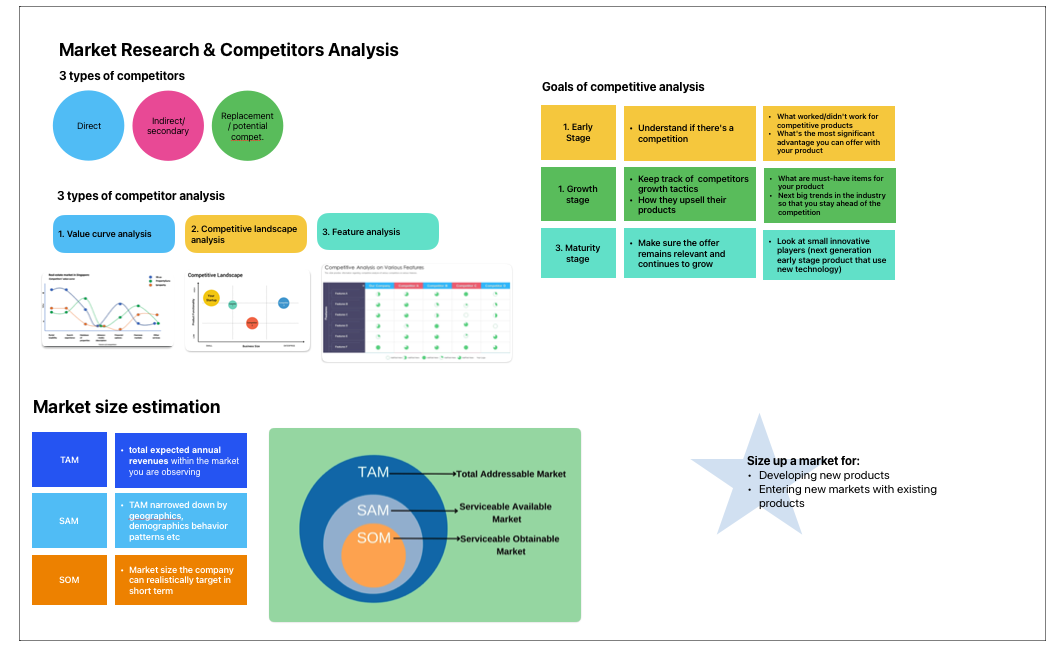In-depth Market Research & Competitive Analysis
– Customer insights based on online data (forums, social media, search engines, self-help materials demand) to understand what people are searching for and talking about related to your problem space
– Industry trend analysis
– Both qualitative and quantitative analysis included
SWOT Analysis
– Strengths
– Weaknesses
– Opportunities
– Threads
– Customer persona profile identification
– Demographics
– Psychographics & typical behaviors
Market Size Estimation
– TAM (Total Addressable Market) – the whole market’s potential
– SAM (Serviceable Available Market) – TAM narrowed down by geographics, demographics, behavioral patterns, and other criteria; your longer-term target market
– SOM (Serviceable Obtainable Market) – the market size that a company is realistically targeting to capture in a short period; crucial for potential investors
Competitive Analysis
1. Early-stage product – assessing market competitiveness to gauge the importance of the problem and identify the most significant advantage for your product
2. Growth-stage product – defining must-have features and identifying emerging industry trends
3. Maturity-stage product – ensuring your product remains relevant and continues to grow while monitoring new competitors
– Direct Competitors – solve the same need for the same customers
– Secondary Competitors – address similar needs but in different ways, often for different users
– Replacement/Potential Competitors – offer a different product but compete for the same users
Competitive Landscape Analysis
Detailed analysis of three main competitors (direct or indirect, depending on the product):
Value Curve Analysis – compares key competitive factors in your industry to highlight your product’s strengths and areas for improvement
Feature Analysis – compares your product’s features against your closest competitors




